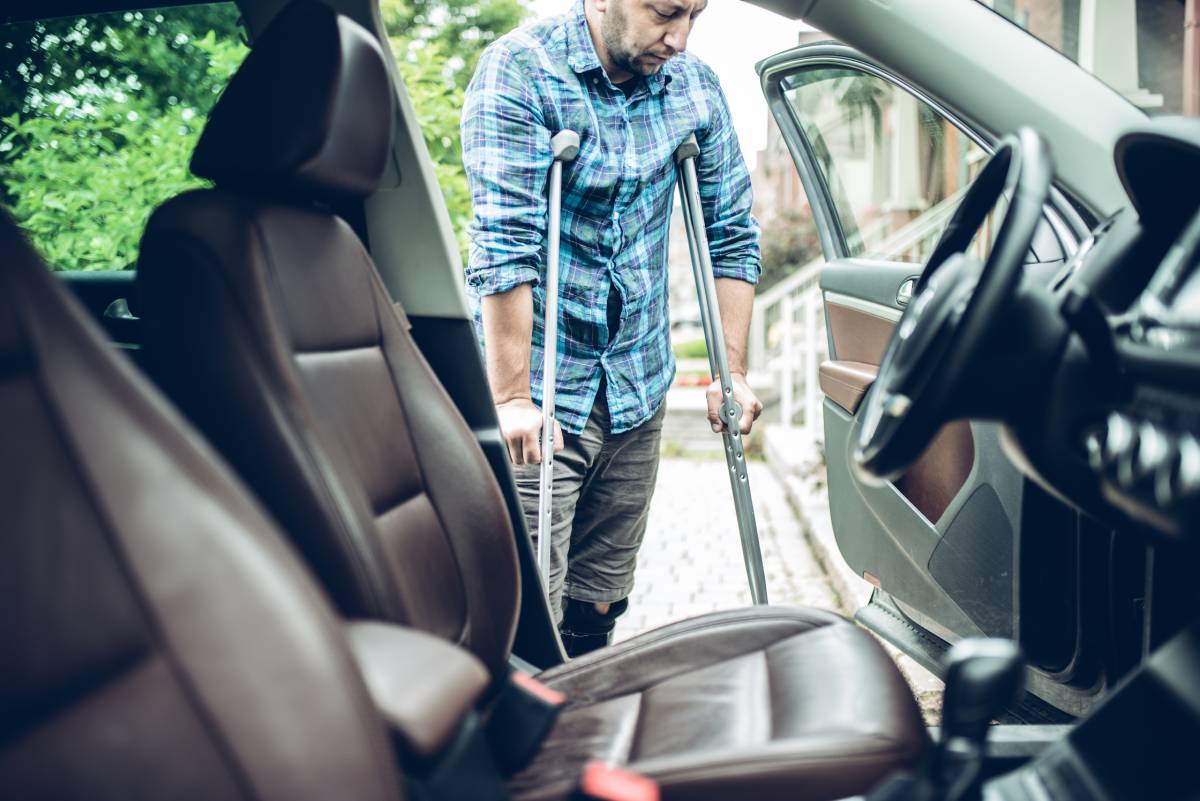Patients who go under anesthesia often experience temporary psychomotor impairments. They may find their thought processes slowed, their reflexes inhibited, and their mind cloudy in the hours after anesthesia [1, 2]. Some patients may even suffer from bouts of amnesia [1]. It is no wonder, then, that anesthesia-related impairments have led to road accidents, demonstrating the dangers of driving after anesthesia [3]. Accordingly, doctors typically advise patients to not drive in the short period after anesthesia [1]. However, it remains unclear how long patients should refrain from driving post-anesthesia. While research has not yet provided a precise answer to that question, studies reveal that the duration that patients should wait to drive after anesthesia may depend on various factors, including the patient’s unique risk factors, the type of procedure they underwent, and the type of anesthesia they received.
The amount of time that a person should wait to drive after receiving anesthesia depends partially on their risk factors. While there have not been many comprehensive studies detailing the risk factors for difficulty driving after anesthesia, researchers have noted the risk factors commonly associated with post-anesthesia delirium and cognitive decline. For instance, Bekker and Weeks have noted that “a significant percentage of elderly patients experience transient post-operative delirium and/or long-term post-operative cognitive dysfunction (POCD)” [4]. Therefore, it may be recommended for older patients to wait longer to drive, or, at the very least, receive closer assessment for psychomotor difficulties after anesthesia. In their study, Belrose and Noppens also found that some individuals with comparatively higher levels of anxiety or depression were more likely to experience POCD, which could, but not does not resolutely, suggest a link between those conditions and the need to wait to drive longer following anesthesia [5].
The type of procedure that a patient undergoes can also have significant bearing on how long a person should wait to drive after anesthesia. People who undergo leg surgery may have to wait weeks to drive due to be physically unable to control a vehicle, while someone who has just had a colonoscopy could likely drive within a day of their procedure [1]. For the same reason, total knee arthroplasty patients, too, usually have to wait six weeks to drive after surgery because of their inability to use the brake pedal [3]. Interestingly, in comparison to percutaneous coronary intervention patients, those who experience coronary artery bypass grafts experience more significant cognitive decline and impairments to attention [6]. However, in Ahlgren and colleagues’ study, the percutaneous coronary intervention group were comparatively worse at maneuvering their vehicles [6].
Lastly, the type of anesthesia that a patient receives might affect their preparedness to drive. Normally, general anesthesia patients are considered safe to drive twenty-four hours after anesthesia [2]. Patients who receive short-acting agents like propofol typically recover more rapidly than those that receive traditional sedation, which some medical professionals hypothesize could mean that they can drive sooner than twenty-four hours after anesthesia [7]. However, it is important to remember that the combination of certain medications with anesthesia, such as muscle relaxers and prescription pain relievers [1], may also impact a person’s ability to drive, so preparedness to drive should be evaluated holistically.
By considering factors such as a patient’s profile, the procedure they have just undergone, and the substances, including but not limited to anesthesia, that they have ingested, medical teams may be able to more accurately estimate when driving is advisable after anesthesia.
References
[1] J. Whitlock, “Driving After Surgery or Anesthesia,” Very Well Health, Updated October 24, 2021. [Online]. Available: https://www.verywellhealth.com/driving-after-surgery-3156820.
[2] F. Chung et al., “What Is the Driving Performance of Ambulatory Surgical Patients after General Anesthesia?,” Anesthesiology, vol. 103, pp. 951-56, November 2005. [Online]. Available: https://doi.org/10.1097/00000542-200511000-00008.
[3] F. Chung and N. Assmann, “Car Accidents After Ambulatory Surgery in Patients Without an Escort,” Anesthesia & Analgesia, vol. 106, no. 3, pp. 817-20, July 2020. [Online]. Available: https://doi.org/10.1213/ane.0b013e3181609531.
[4] A. Y. Bekker and E. J. Weeks, “Cognitive function after anaesthesia in the elderly,” Best Practice & Research Clinical Anaethesiology, vol. 17, no. 2, pp. 259-72, June 2003. [Online]. Available: https://doi.org/10.1016/S1521-6896(03)00005-3
[5] J. C. Belrose and R. R. Noppens, “Anesthesiology and cognitive impairment: a narrative review of current clinical literature,” BMC Anesthesiology, vol. 19, pp. 1-12, December 2019. [Online]. Available: https://doi.org//10.1186/s12871-019-0903-7.
[6] E. Ahlgren et al., “Neurocognitive impairment and driving performance after coronary artery bypass surgery,” European Journal of Cardio-Thoracic Surgery, vol. 23, no. 3, pp. 334-40, March 2003. [Online]. Available: https://doi.org/10.1016/s1010-7940(02)00807-2.
[7] Cleveland Clinic, “Driving After Endoscopic Procedural Sedation: Is a 24-hour Ban Too Long?,” Cleveland Clinic, Updated January 20, 2020. [Online]. Available: https://consultqd.clevelandclinic.org/driving-after-endoscopic-procedural-sedation-is-a-24-hour-ban-too-long/.
